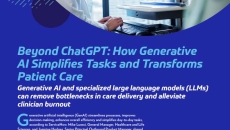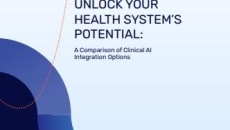Analytics
SPONSORED
According to research by the American Hospital Association, growing after-hours workloads and administrative tasks are leading contributors to clinician burnout.
SPONSORED
Healthcare organizations (HCOs) continue to face challenges in hiring and staffing retention, compounded by patients’ shifting expectations. Best-in-Class HCOs with “next-gen” patient care programs that deliver excellent clinical results and patient experiences through deploying artificial intelligence (AI) and automation are seeing significant performance success.
Federal labor data showed joblessness in the technology sector up to 5.7% in January, compared to 3.9% this past December, surpassing the overall national unemployment rate of 4%.
Remote Patient Monitoring
Remote patient monitoring has begun to collect vital signs and other patient data more strategically and efficiently: Instead of waiting until a patient experiences distress, AI can help clinicians intervene earlier.
At the HIMSS25 Smart Health Transformation Forum, health system execs will explore value propositions of the latest digital tools. Esther Kim of Mass General Brigham, Kali Arduini Idhe of Northwestern Medicine and Marcee Chmait of Providence discuss.
More than 40% of C-suite executives polled by Deloitte said they've seen a moderate to significant return on their artificial intelligence investments, but nearly as many said it's still too early to determine the technology's full impact.
AI & ML Intelligence
The vendor will be introducing ambient listening and medical scribe technologies, and will showcase artificial intelligence that extracts data from documents in various formats and new population health tools for value-based care.
SPONSORED
Reduce administrative burden and seamlessly match patient records.
This resource offers a strategic framework for leaders seeking to implement AI effectively. It provides self-guided tools that walk through crucial steps in the early planning stages, including establishing use cases, assessing partners and gaining consensus.
While a technology plus people plus process-focused strategy is essential for scalable clinical AI, arguably the decision with the largest impact on your short-term needs and long-term infrastructure usability is the AI integration method you choose.











